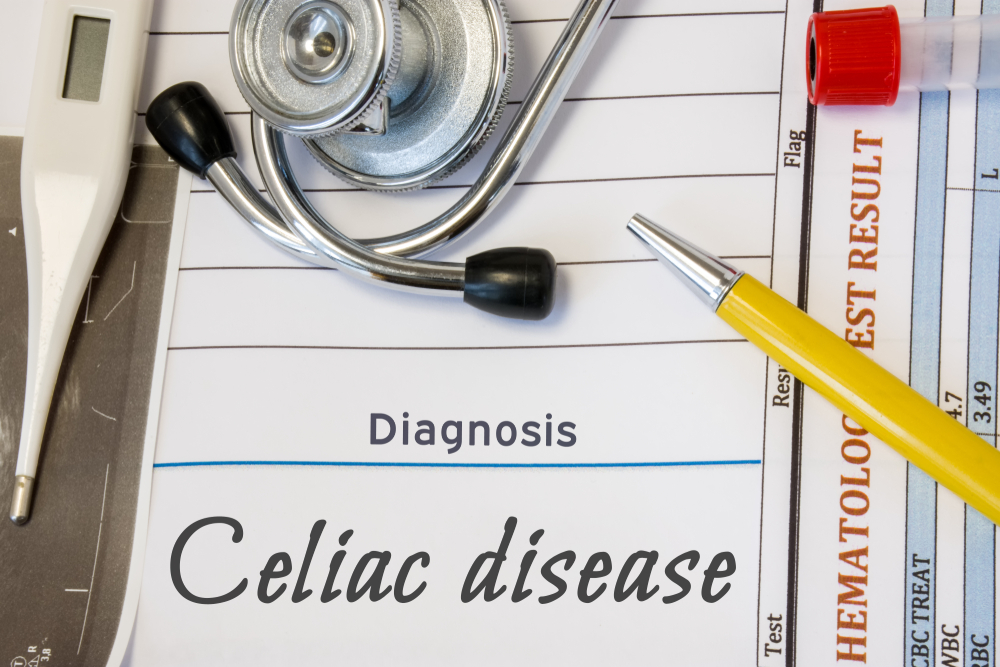Comprehensive Guide to Celiac Disease: Understanding Symptoms, Causes, and Management Strategies
This comprehensive guide explores celiac disease, highlighting its causes, symptoms, diagnosis, and management. It emphasizes the importance of a gluten-free diet and ongoing research for new treatments, providing valuable insights on living with this autoimmune disorder.

Celiac disease is a chronic autoimmune disorder that affects millions of individuals globally, making it a significant concern within the realm of digestive health. This condition arises when the immune system reacts adversely to gluten, a protein composite found predominantly in wheat, barley, rye, and oats. The immune response specifically targets Gliadin, a component of gluten, leading to damage in the lining of the small intestine. This damage manifests as villous atrophy, which impairs the intestine's ability to absorb vital nutrients, resulting in a broad spectrum of health issues.
The mechanism of celiac disease involves an inappropriate immune response triggered by gluten ingestion. When gluten enters the digestive system of a genetically predisposed individual, it prompts immune cells to attack the villi—tiny finger-like projections responsible for nutrient absorption. As these villi become flattened or damaged, individuals experience malabsorption of essential nutrients such as iron, calcium, vitamins, and other micronutrients. This malabsorption leads to common symptoms like chronic fatigue, unexplained weight loss, diarrhea, constipation, bloating, and abdominal pain. Furthermore, complications such as anemia, osteoporosis, neurological disorders, and increased risk of other autoimmune diseases may develop if the condition remains unmanaged.
Genetics play a pivotal role in the development of celiac disease, with certain gene variants such as HLA-DQ2 and HLA-DQ8 increasing susceptibility. Notably, the disease can manifest at any age, from early childhood to late adulthood. Often, stressful life events, including surgeries, pregnancy, infections, or emotional trauma, can trigger the onset of symptoms in genetically predisposed individuals.
Diagnosis of celiac disease involves a combination of serological blood tests to detect specific antibodies, such as anti-tissue transglutaminase (tTG) and anti-endomysial antibodies, coupled with confirmatory small intestine biopsies. It is crucial to avoid gluten-containing foods during diagnosis, as unnecessary dietary restrictions can obscure the results. Once diagnosed, the cornerstone of management remains a lifelong strict gluten-free diet, which helps in healing intestinal damage, alleviating symptoms, and preventing complications.
Adherence to a gluten-free diet can be challenging due to the ubiquity of gluten in many processed foods and restaurant dishes. Therefore, dietary education and support from healthcare professionals are essential for successful management. In recent years, ongoing research is exploring alternative therapies, including enzymatic treatments, vaccines, and immune-modulating drugs, with the hope of providing more options for those affected.
In addition to dietary management, regular medical follow-up is vital. Monitoring nutrient levels, bone health, and potential associated autoimmune conditions ensures comprehensive care. Support groups and patient advocacy organizations also play a crucial role in raising awareness, providing educational resources, and improving quality of life for individuals living with celiac disease.
In summary, celiac disease is a complex autoimmune disorder with significant health implications. While a definitive cure is yet to be discovered, strict adherence to a gluten-free diet remains the most effective method of management. Awareness, early diagnosis, and comprehensive care are key to preventing complications and improving the well-being of those affected by this condition.





